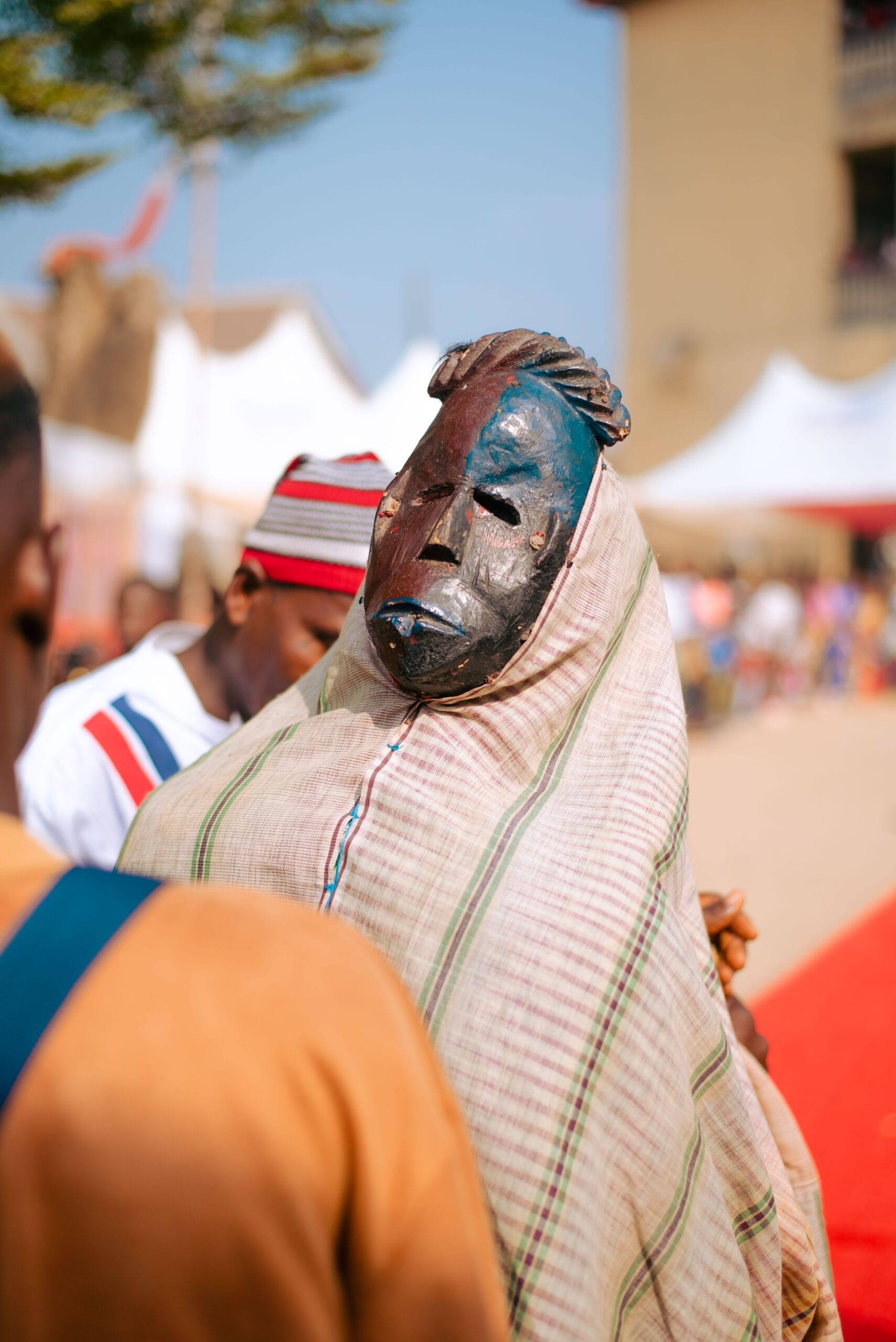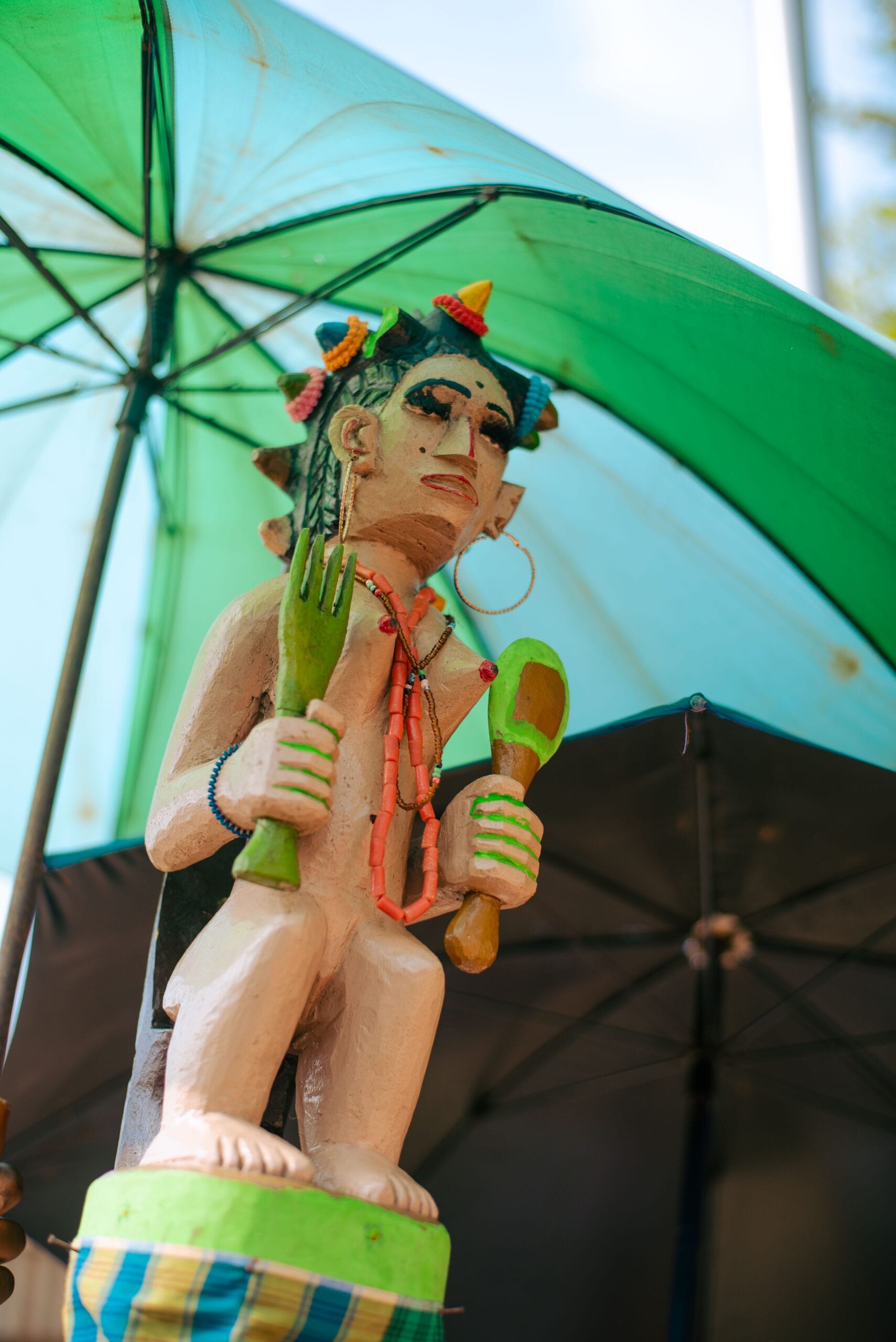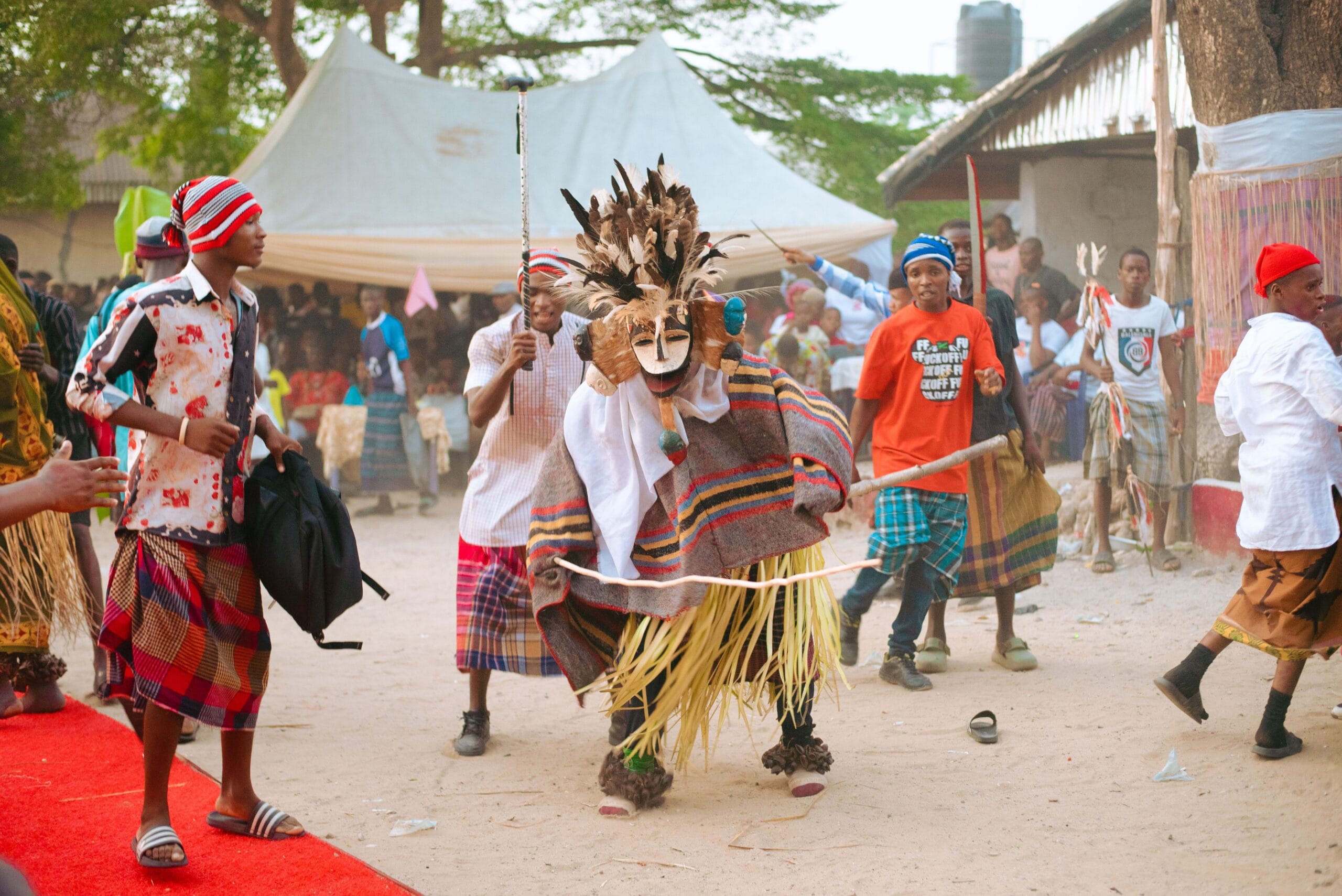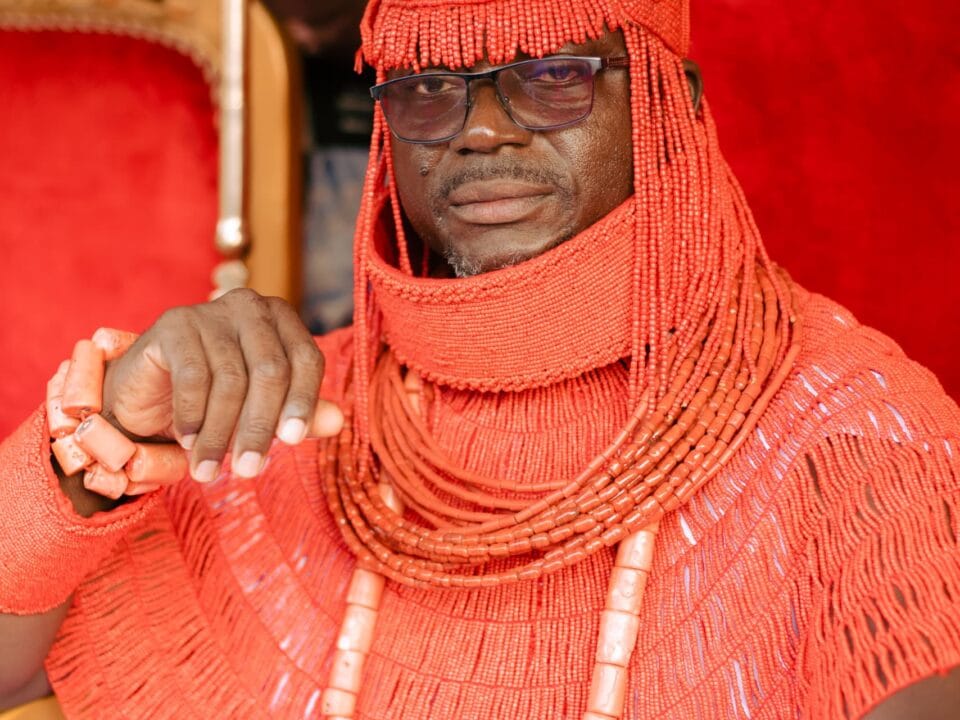
100 Ekpeye Proverbs and Their Meaning
September 2, 2024
Speak Ekpeye Fluently Language Initiative celebrates Five Years of Impact
April 20, 2025Owu Dance
Owu’ is an Ekpeye term for ‘facial mask’, Owu dance, is a vibrant masquerade performance deeply rooted in the Ekpeye culture. Performers, range from energetic youths to elders, wearing carved masks paired with fabric, raffia, leg rattles, and other costumes. These masks, often worn on the face, bring different characters to life through their unique designs and movements.
Owu is one of the material cultures the Ekpeye people inherited from their Benin ancestry, with Benin widely regarded as the cradle of mask carving. This heritage reflects the Ekpeyes’ ancestral connection to Benin and its rich material culture.
Each performance tells a story of a past event or figure represented, with the dancer’s movements embodying the essence of the character represented by the mask — whether it’s a bird, a mammal, a person, or a mythical creature. This tangible cultural heritage of the Ekpeye people blends culture, art, tradition, and nature in a mesmerizing display. Below are some common Owu characters explained.
Owu Types— Description of Ten Notable Ekpeye Masquerades
Ekpeye masks are of two major categories, humans and creatures. Here are some examples:
1. Owu Anakani (The Old Lady Mask)


Owu Anakani is an Ekpeye mask crafted to embody the essence of old age, symbolizing the final stage of womanhood. This is shown in the details of the costume, from the way the mask is worn at the back of the head, the faded clothing, and its deliberate movements, reflecting the wisdom and fragility that come with old age.
During the performance, the masquerade moves slowly, imitating the unsteady gait of an elderly woman. At times, it staggers as though about to fall, a poignant reminder of the vulnerabilities of old age. However, the masquerade is never left unsupported — an escort walks alongside, holding and steadying it when needed. This act of assistance highlights the communal care and respect for elders within the Ekpeye culture, serving as a visual metaphor for the importance of supporting elders. The performance is both a tribute to the resilience of aged women and a celebration of the intergenerational bond that sustains the community.
2. Ogbumadube — One who kills to live

Oral history has it that this character ‘Ogbumaube’ kills for a living. I am always caught running during its performance because of the chaos that happens whenever this mask makes an entrance.
Ogbumadube is one of the most iconic and feared masks in Ekpeye culture, earning its reputation as both a symbol of terror and a centerpiece of masquerade performances. The mask is designed to embody the essence of a feared and strong man, with exaggerated features that amplify its intimidating presence — a large nose, wide mouth, big head, piercing eyes, and leg rattles that jingle with every step. Its costume, draped in striking red and white fabric, adds to its commanding aura.
When Ogbumadube makes its grand entrance, the atmosphere shifts. Women scream and quickly warn their children to keep their distance, while even the men instinctively step back, acknowledging the mask’s formidable energy. Yet, amid the fear, Ogbumadube ignites a surge of excitement and anticipation. Its performance is a highlight of the masquerade display, as the crowd erupts in rhythmic chants: “Ogbumadube… Ogbumadube… Owubaa… Owubaa!”
This mix of fear and thrill is what makes Ogbumadube unforgettable.
3. Nwala

Nwala is a masquerade that brings the humble yet heroic figure of a gardener or laborer to life. Nwala’s costume tells his story: a practical outfit fit for hard work, complete with a bag (holding his snuff-box) a hoe, and a machete in hand, ready for the task of clearing grass.
As illustrated in his performance, the masquerade suddenly encounters a snake. Startled, Nwala recoils in fear, retreating as if unsure of his next move. The tension builds as he reaches for his snuff-box, inhaling deeply for courage. Nwala summons his bravery and finally overcomes the snake, triumphing over his fear.
4. Krowu

Krowu is a spirited seabird brought to life in this masquerade performnce. Unlike the duck that simply floats on water, Krowu dives beneath the surface, skillfully catching fish with precision. This daring nature is vividly portrayed during its performance.
As Krowu prepares to dance, a basin of water is brought into the arena, representing its natural habitat. The masquerade moves with a unique blend of grace and energy, mimicking the bird’s swift dives and soaring flights. With outstretched arms and sweeping motions, Krowu seems to take to the skies.
5. Nwaikwere



The Nwaikere mask is a representation of youth and beauty, symbolizing a woman in her prime. The mask is adorned with a mirror and comb in hand, tools that reflect self-care and confidence.
During its performance, Nwaikere is accompanied by two ladies holding a full-length mirror and an umbrella, allowing her to admire her own reflection, emphasizing the theme of self-love and vanity. The dance embodies the grace and charm of a woman in her prime, capturing the energy, confidence, and beauty of youth with every step in contrast to Owu anakani described in number 1 of this piece.
6. Eke-éte



Although this mask is called Eke-Ete, meaning “big ears,” its design is far more symbolic. Attached to its large ears are several faces — two on each side — creating a striking and multifaceted appearance. These additional faces may signify heightened awareness or the ability to perceive multiple perspectives. During its performance, the drums are played with a rhythm that calls out the name Eke ete.
kiiridi… kiriidiii…. eke..ete..
7. Okidhikata / Ucha



This carved mask portrays the image of a he-goat mating with a she-goat, symbolizing the characteristics of a he-goat — bold, determined, and often likened to a womanizer. During its performance, the masquerade takes on this persona, moving through the crowd in search of women who are not wearing the traditional ijele (wrapper) around their waist.
In Ekpeye culture, it is customary for spectators to adorn themselves in this attire when attending such events, demonstrating a sense of tradition and respect. The mask’s playful yet symbolic performance adds an element of humor and cultural significance, reminding the audience of the importance of honoring customs while showcasing the spirited nature of the he-goat it represents.
8. Ebulu (Ram)

Ebulu depicts the characteristics of a ram, showcasing its bold and instinctive nature. During its performance, the masquerade mimics the behavior of a ram by sniffing and smelling as it approaches spectators, especially a group of women. This act vividly portrays the ram’s curious and territorial instincts, bringing its essence to life in a way that entertains and connects with onlookers.
9. Adaunwo Usali

Adaunwo-Usali symbolizes a pivotal phase in a woman’s life — the time dedicated to family life and motherhood. This mask embodies the virtues of nurturing, resilience, and the responsibilities that come with motherhood.
10. Ezhigbo

Ezhigbo represents a beautiful and mature woman, embodying grace, elegance, and gentleness. Harmless and welcoming, this mask is a symbol of poise and dignity.
During its performance, Ezhigbo draws women from the crowd who gather in groups to dance alongside her. Ezhigbo’s presence is a reminder of the beauty and strength found in womanhood.
More Owu photos?
Visit Wikimedia Commons and search the category “Ekpeye Language and Culture Resources” or simply click on the link below https://commons.m.wikimedia.org/wiki/Category:Ekpeye_Language_and_Culture_Resources




